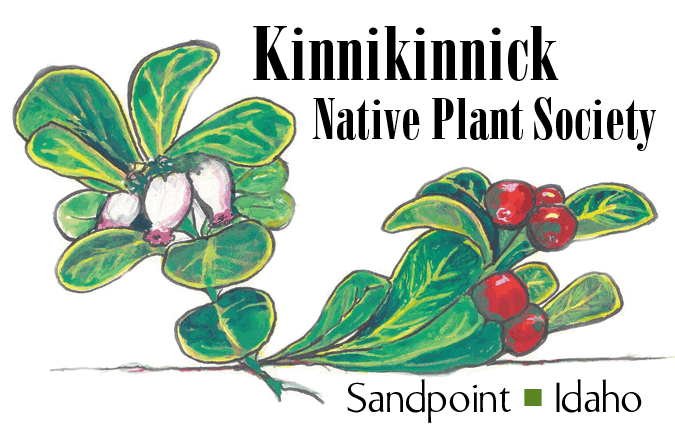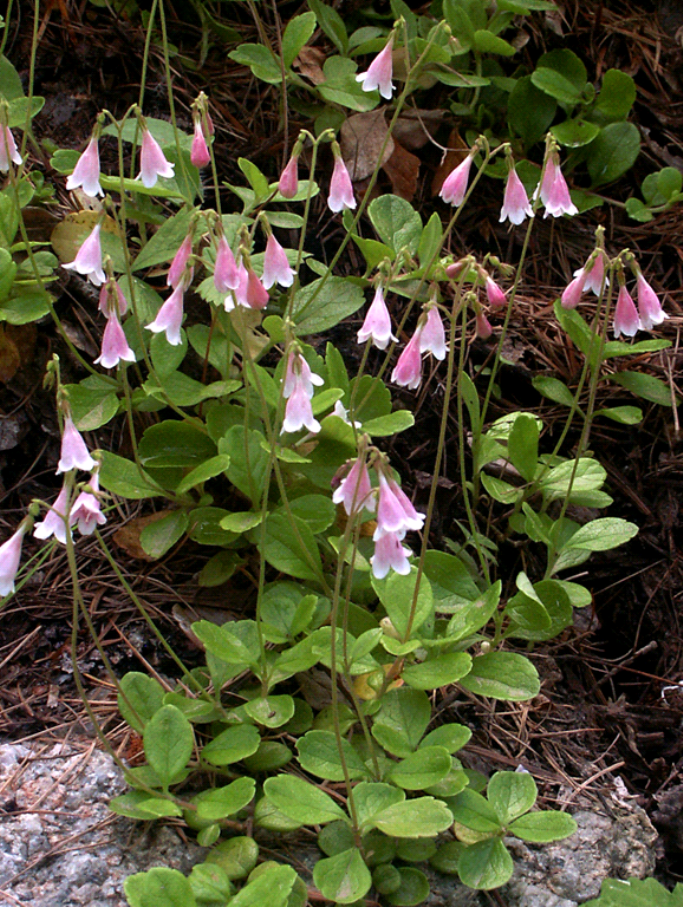Twinflower
(Linnaea borealis)
Twinflower
When Swedish botanist Carolus Linnaeus, remembered as the “Father of Modern Taxonomy” (the naming system used for plants and animals worldwide) was honored with a Swedish noble title in 1757, he adopted Twinflower (Linnaea borealis) as his personal symbol. Originally named to honor Linnaeus by Jan Frederik Gronovious, his good friend and teacher, Twinflower became the example of naming plants after individuals. Linneaus named nearly 8,000 plants during his lifetime – the pretty ones after his friends and common weeds after his detractors.
Although Twinflower is said to prefer cool, dark forests, it can be found in almost any habitat from Sweden to Siberia, across Canada and the northern states in the United States. The species name “borealis” means northern. An inconspicuous ground cover with small, glossy green leaves in pairs,Twinflower might be ignored, or even stepped on while hiking. But when it blooms, it's a different story.
Beginning in June, two delicate, pinkish-white, bell-shaped flowers appear on slender “Y”-branched stocks. The flowers rise in abundance several inches above the plant's carpet of leaves and runners and the forest floor is sprinkled with “fairy hats.” The common name “Twinflower” is descriptive of this presentation. Flowers are highly fragrant attracting flower flies, bumblebees, and geometrid wasps, whose larval stage is the common inchworm.
Twinflower is a great performing ground cover in a conifer understory, in a moist, shaded rock garden or shady flower beds. Plants form loosely matted clumps with semi-woody, leafy evergreen stems producing long runners that put down root nodes at intervals. Many colonies of Twinflower are all one genotype. Since Twinflower requires cross-pollination to produce viable seeds, these clonal colonies can be reproductively isolated, though they are long-lasting and spread by stolons forming additional clonal patches. Existing plants can be divided in the spring.
In North America, native Indian tribes, the Algonquin, Iroquois and Snohomish among others, used Twinflower as a tonic for female troubles and in pregnancy. It was given to children for cramps, fever and crying. Leaves were used for colds and a poultice made from the leaves and stems eased headaches and inflamed limbs.
Look for Twinflower blooming this spring in the Moist Forest habitat in the North Idaho Native Plant Arboretum. Open to the public, parking for the Arboretum is at 611 S. Ella Ave. or on the street.
Twinflower is found on page 228 of the KNPS publication, Landscaping with Native Plants in the Idaho Panhandle, available at local bookstores and the Bonner County History Museum.
Native Plant Notes are created by the Kinnikinnick Native Plant Society. To learn more about KNPS and the North Idaho Native Plant Arboretum, explore www.nativeplantsociety.org.

